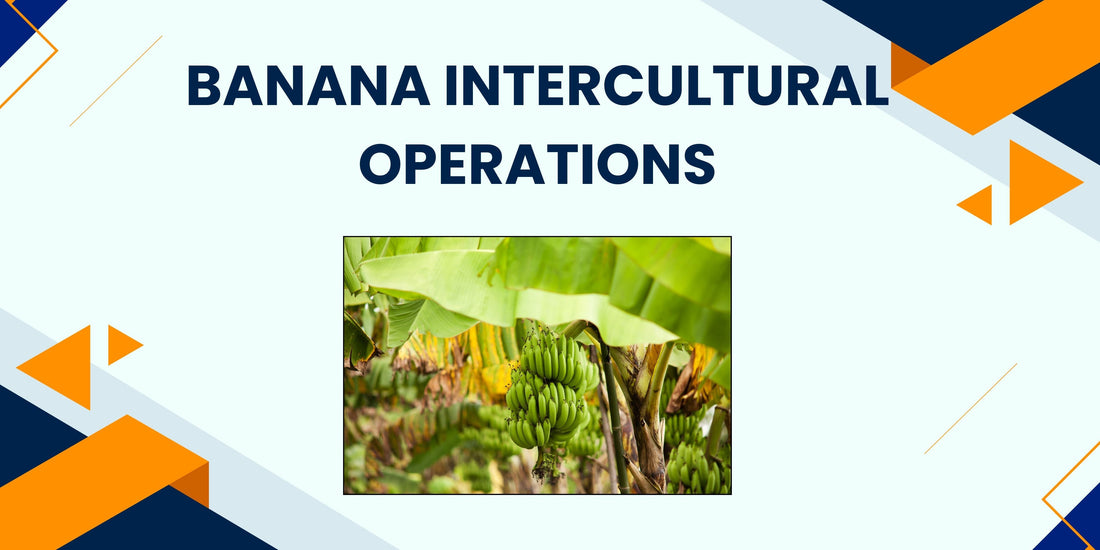
Banana Intercultural Operations: A Guide for Better Growth and Yield
Banana is one of the most important fruit crops grown in India, valued for its high demand and quick returns. To achieve healthy crop growth and maximum yield, proper intercultural operations are essential. These practices not only improve soil health but also help in controlling weeds, pests, and diseases, ensuring the banana crop thrives throughout its lifecycle.
1. Land Preparation and Planting
- Well-prepared land with deep ploughing helps in good root penetration.
- Organic manures like FYM (Farmyard Manure) or compost should be incorporated into the soil before planting.
- Proper spacing (generally 1.5 m × 1.5 m) allows enough room for crop management and intercultural activities.
2. Weeding and Mulching
- Regular weeding is crucial during the first 3–4 months after planting, as weeds compete with banana plants for nutrients and water.
- Mulching with banana leaves, straw, or plastic sheets conserves soil moisture, suppresses weed growth, and improves soil fertility over time.
3. Desuckering (Removal of Unwanted Suckers)
- Banana plants produce excess suckers that drain nutrients from the main plant.
- Regular desuckering ensures proper growth of the mother plant and uniform bunch development.
- Select only 1–2 healthy suckers per plant (for ratoon crop) and remove the rest at ground level using a sharp knife.
4. Irrigation and Drainage
- Banana requires regular and adequate irrigation due to its shallow root system.
- Drip irrigation is highly recommended for efficient water use and fertigation.
- During rainy season, proper drainage channels should be maintained to avoid waterlogging, which can cause root rot.
5. Nutrient Management
- Apply organic manures along with recommended doses of nitrogen, phosphorus, and potassium (NPK) fertilizers.
- Foliar sprays of micronutrients like zinc, boron, and magnesium support healthy growth and bunch size.
- Use bio-fertilizers and growth promoters to enhance soil health and nutrient uptake.
6. Propping
- Heavy bunches may cause plants to bend or topple.
- Propping with bamboo poles or other supports keeps plants upright and prevents damage to bunches.
7. Bunch Covering
- Covering banana bunches with polythene bags, dried leaves, or banana sheath protects fruits from dust, sunburn, and pests.
- It also improves fruit color, quality, and market appeal.
8. Pest and Disease Management
- Regular monitoring of the crop is necessary to identify early symptoms of pests like banana weevil, aphids, and thrips.
- Use traps, neem-based sprays, or recommended pesticides (Dr. Eliminator) for effective control.
Product Link: https://www.khethari.com/products/dr-eliminator-insecticide
- Maintain field hygiene by removing infected plant parts to reduce disease spread.
Conclusion
Banana intercultural operations are not just routine tasks—they are the backbone of successful cultivation. By practicing timely weeding, desuckering, nutrient management, irrigation, and pest control, farmers can significantly improve yield, fruit quality, and profits. Using modern inputs like bio-fertilizers, growth promoters, and eco-friendly pest solutions can further enhance crop health while reducing production costs.
